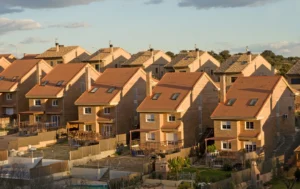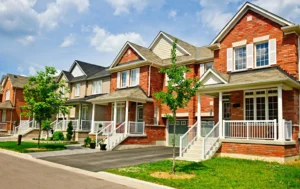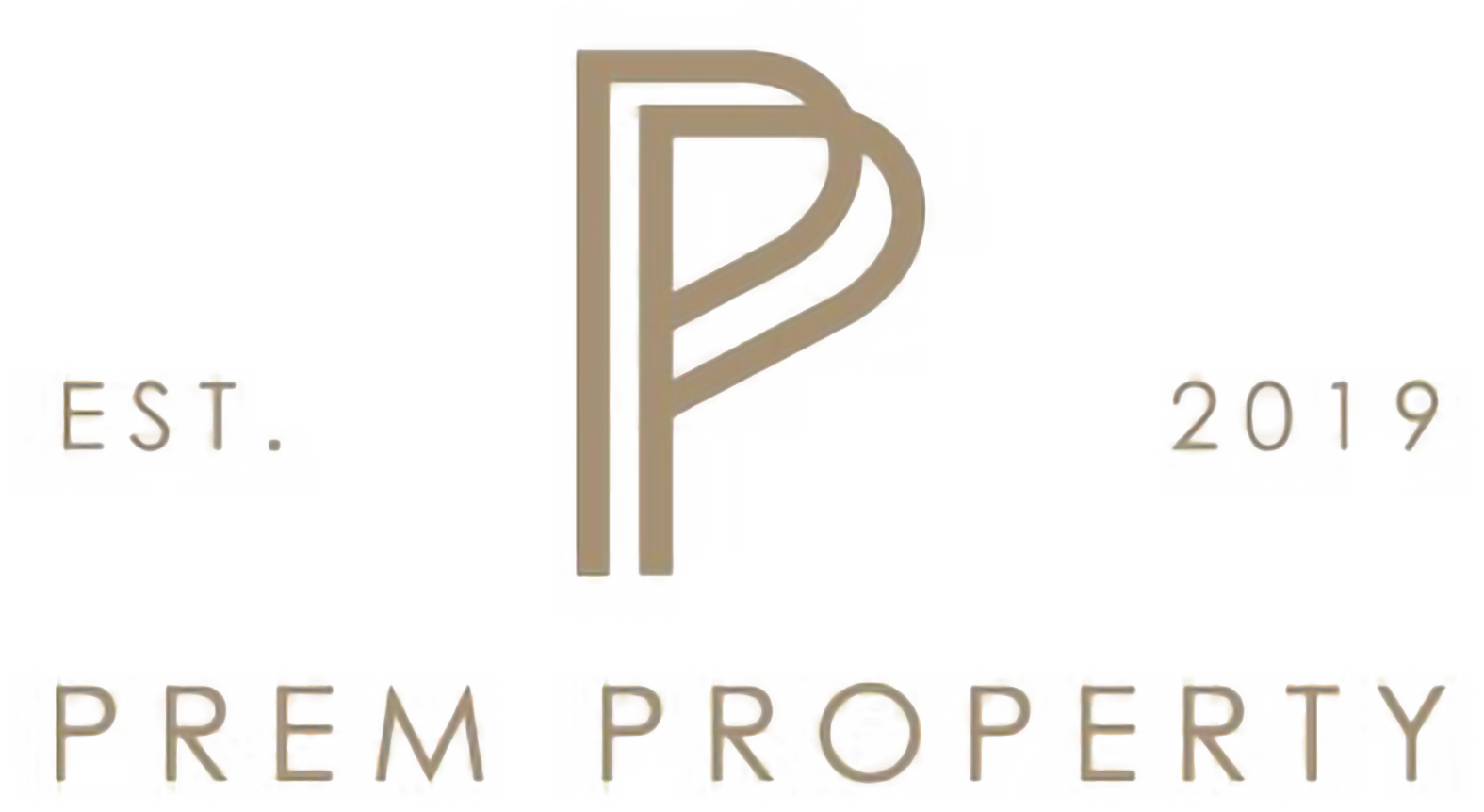Finding the right financial arrangement when leasing property for care home purposes represents one of the most crucial decisions you’ll make as a property owner. With the UK care home market valued at £26.2 billion as of December 2024, the sector continues demonstrating remarkable resilience and growth potential. Property owners increasingly recognise that traditional letting arrangements don’t always align with the unique demands of care home operations. That’s precisely where guaranteed rent solutions come into play, offering stability and peace of mind in an otherwise unpredictable market.
Understanding Guaranteed Rent in the Care Home Sector
Guaranteed rent solutions differ fundamentally from standard rent guarantee schemes. Rather than purchasing insurance against potential tenant defaults, you’re entering into a direct agreement where a care provider or specialist organisation commits to paying your rent regardless of occupancy levels or operational challenges. This arrangement transforms your property investment from a variable income stream into a predictable, dependable revenue source.
The UK care home sector has witnessed remarkable stability recently. Occupancy rates reached 89.6% in Q1 2025, building upon the consistent performance throughout 2024. This stability signals growing confidence among operators and property owners alike. Moreover, the sector’s fundamentals remain exceptionally strong, with approximately 410,000 people currently residing in care facilities across the United Kingdom.
What makes guaranteed rent particularly attractive for care home properties? The answer lies in risk mitigation. Care homes face unique operational pressures—staffing challenges, regulatory compliance costs, and fluctuating occupancy rates. These factors can impact rental payments in conventional lease arrangements. Guaranteed rent solutions effectively transfer these operational risks away from you as the property owner.
Five Key Benefits of Guaranteed Rent Solutions
1. Financial Predictability and Cash Flow Certainty
Managing property investments becomes infinitely simpler when you know exactly what’s coming into your account each month. Guaranteed rent eliminates the anxiety of late payments, void periods, or tenant disputes. You’ll receive a fixed rental income on predetermined dates, allowing you to plan mortgage payments, maintenance budgets and future investments with complete confidence.
Traditional letting often involves void periods averaging 4-6 weeks between tenants. With care homes operating under guaranteed rent agreements, these gaps disappear entirely. The organisation providing the guarantee handles all aspects of occupancy, freeing you from the constant worry of finding and vetting new tenants.
2. Administrative Burden Relief
Property management consumes considerable time and energy. From conducting viewings and processing applications to handling maintenance requests and managing contractor relationships, the workload quickly becomes overwhelming. Guaranteed rent arrangements typically include full property management services as part of the package.
Your lease partner assumes responsibility for day-to-day operations, regulatory compliance, and property upkeep. This hands-off approach proves particularly valuable for care home properties, where regulatory requirements extend far beyond standard residential letting. Care Quality Commission (CQC) standards, health and safety regulations, and specialist equipment maintenance all fall under the operator’s remit rather than yours.
3. Professional Property Maintenance
Care homes require exceptionally high maintenance standards. Guaranteed rent agreements usually operate under repairing lease terms, meaning your partner organisation maintains the property to exacting standards throughout the lease period. They understand that delivering quality care depends upon well-maintained facilities.
This professional approach often results in better property conditions compared to traditional letting arrangements. Care operators recognise that their reputation depends upon the environment they provide. Consequently, they invest in preventative maintenance, quick repairs, and regular upgrades that preserve—and often enhance—your property’s value over time.
4. Long-Term Stability and Reduced Vacancy Risk
The care homes market has been labelled as entering a ‘year of growth’ in 2025, with increased transactional activity observed across the sector. This growth trajectory suggests sustained demand for quality care facilities. Guaranteed rent agreements typically extend for longer periods than standard tenancies—often 10, 15, or even 20 years.
These extended terms provide unparalleled investment stability. You’re not scrambling to find new tenants every year or two. Instead, you’ve secured a reliable income stream that extends well into the future, allowing you to make confident long-term financial plans.
5. Market-Aligned Rental Income
Contrary to some misconceptions, guaranteed rent doesn’t necessarily mean accepting below-market rates. Reputable organisations offering guaranteed rent solutions conduct thorough market analyses to ensure rental values reflect current conditions. Many agreements include periodic rent reviews, ensuring your income keeps pace with market movements and inflation.
The care home market has experienced substantial growth, with values increasing by 40% over four years and nine months. This robust performance indicates healthy market conditions that support fair rental valuations for property owners choosing guaranteed rent arrangements.

Structuring Your Care Homes for Lease Agreement
Creating an effective lease agreement requires careful consideration of several critical elements. The lease term forms your foundational decision. Whilst longer terms provide greater stability, they also commit you to specific arrangements for extended periods. Most care home guaranteed rent agreements span 10-20 years, though some flexibility exists based on your circumstances and the operator’s requirements.
Rent review mechanisms deserve particular attention. These provisions determine how your rental income adjusts over time. Common approaches include fixed percentage increases, RPI-linked adjustments, or periodic market reviews. Each method carries different implications for your long-term returns. Fixed increases offer certainty but might lag behind market movements in strong growth periods. RPI-linked reviews provide inflation protection whilst remaining predictable. Market reviews potentially deliver higher returns but introduce more variability.
Repairing obligations represent another crucial consideration. Most guaranteed rent arrangements operate as Full Repairing and Insuring (FRI) leases, where the tenant assumes responsibility for all repairs, maintenance, and insurance costs. This structure significantly reduces your ongoing obligations but requires confidence in your tenant’s financial stability and operational competence.
Break clauses provide both parties with flexibility should circumstances change dramatically. However, their inclusion requires balanced negotiation. As the landlord, you’re seeking long-term stability, whilst operators want assurance they can develop sustainable care services. Finding the right balance protects both parties’ interests without undermining the agreement’s core stability benefits.
Evaluating Potential Guaranteed Rent Partners
Selecting the right organisation to lease your property demands thorough due diligence. Not all guaranteed rent providers offer equal reliability, competence, or financial stability. Your investigation should encompass several key areas to ensure you’re entering a secure, beneficial arrangement.
Prem Property, based in Birmingham, West Midlands, exemplifies the type of professional guaranteed rent solution provider that landlords should consider. They offer secure, guaranteed rental income solutions and comprehensive property management services across various accommodation types, including care facilities, with full-service packages that ensure landlords receive rent on time every month. This level of professional service represents the standard you should expect when evaluating potential partners.
Start by examining financial stability. Request recent accounts, review credit ratings, and investigate the organisation’s funding sources. Care homes operate with tight margins, and financial difficulties can emerge unexpectedly. Understanding your potential partner’s financial position helps you assess whether they can truly honour guaranteed rent commitments throughout the lease term.
Operational track record matters enormously. How long has the organisation operated in the care sector? What’s their occupancy history across existing facilities? Have they maintained consistent CQC ratings? These questions reveal operational competence and the likelihood they’ll succeed in managing your property effectively.
References from other landlords provide invaluable insights. Speak with property owners who’ve entered similar arrangements with the organisation. Ask about payment reliability, communication quality, property maintenance standards, and how disputes or challenges have been handled. These conversations often reveal aspects that aren’t apparent from formal presentations or documentation.
Professional reputation within the care sector offers another important indicator. Organisations with strong sector reputations typically maintain those standings through consistent performance, ethical operations, and quality care delivery. Check CQC ratings for their existing facilities, review any media coverage, and consult industry publications for mentions or assessments.
Legal structure and protection mechanisms warrant careful review. How is the guaranteed rent commitment secured? Some organisations provide parent company guarantees, others offer rent deposit schemes, whilst some rely solely on their operational cash flows. Understanding these protections helps you assess actual risk levels versus stated commitments.
Financial Considerations and Tax Implications
Guaranteed rent arrangements carry specific financial and tax implications that differ from traditional buy-to-let investments. Understanding these distinctions ensures you make informed decisions aligned with your broader financial objectives.
Your rental income remains subject to income tax under standard rules, but the certainty of guaranteed rent enables more accurate tax planning. You’ll know your exact rental income throughout the tax year, allowing you to optimise allowances, deductions, and potentially timing of other income sources.
Allowable expenses continue applying as with any rental property, though the extent of your direct expenditure might reduce under guaranteed rent arrangements. Mortgage interest, professional fees for the initial lease negotiation, and any retained responsibilities typically remain deductible. However, day-to-day management costs and minor repairs—now handled by your tenant—no longer feature in your expense calculations.
Capital gains tax considerations become relevant if you eventually sell the property. The lease structure can impact valuations and therefore your potential CGT liability. Properties with long-term, guaranteed rent agreements to established care operators often command premium valuations due to income security. This enhanced value could increase your capital gain, though the reliable income stream throughout ownership typically more than compensates.
Value Added Tax presents minimal complications for most care home landlords. Care home services generally qualify for VAT exemption, meaning your rental income doesn’t incur VAT charges. However, if your property undergoes significant renovations or conversions before leasing, VAT on construction costs might be partially recoverable depending on the specific circumstances.
Business rates typically fall to the tenant under FRI lease arrangements. Care homes benefit from certain rate reliefs, though these apply to the operator rather than affecting your position as landlord. Nevertheless, understanding your tenant’s rate obligations helps you assess their overall cost structure and financial viability.
Market Dynamics Shaping Care Homes for Lease
The UK care sector operates within a complex environment shaped by demographic trends, regulatory frameworks, and economic conditions. Understanding these dynamics helps you make informed decisions about entering guaranteed rent arrangements.
Demographic pressures continue driving demand for care facilities. The UK’s ageing population requires increasing care home capacity. People aged 85 and over represent the fastest-growing demographic segment, and this group utilises care home services disproportionately. This structural demand underpins the sector’s long-term growth prospects and supports sustainable guaranteed rent arrangements.
U.S. capital remains dominant, accounting for over 71% of total H1 2025 investment volume, reflecting sustained international confidence in the UK care market. This overseas interest signals strong fundamentals and growth potential, providing additional assurance for property owners considering guaranteed rent agreements.
Regulatory standards exert significant influence over care home operations. The Care Quality Commission maintains rigorous inspection regimes and quality standards. These requirements create barriers to entry for new operators but provide quality assurance for established providers. When selecting guaranteed rent partners, their CQC track record offers crucial insights into operational competence and sustainability.
Funding mechanisms significantly impact the sector’s economics. Local authority fee rates, which support many care home residents, have faced pressure in recent years. However, self-funded residents—those paying privately for care—represent a growing segment and typically pay higher fees. Understanding your potential tenant’s resident mix helps you assess their revenue stability and ability to maintain guaranteed rent commitments.
Staffing challenges represent one of the sector’s most pressing issues. Care homes struggle to recruit and retain qualified staff, driving labour costs upward. These pressures affect operators’ profitability and operational sustainability. When evaluating guaranteed rent partners, investigate their staffing strategies, retention rates, and wage structures to gauge their ability to maintain quality services whilst honouring financial commitments.
Maximising Returns on Care Homes for Lease
Whilst guaranteed rent provides inherent stability, several strategies can optimise your returns and ensure you extract maximum value from your property investment.
Property condition significantly influences rental valuations. Before entering negotiations, invest in improvements that enhance appeal to care operators. Adequate bathroom facilities, appropriate room sizes, accessible layouts, and compliant infrastructure all contribute to higher rental values. These improvements needn’t be extensive—often, relatively modest investments yield disproportionate returns through enhanced rental terms.
Lease negotiations demand careful attention. Don’t simply accept the first offer presented. Understand market rates for comparable properties in your area. Research what other care operators pay for similar facilities. Armed with this information, you’re positioned to negotiate terms that fairly reflect your property’s value whilst remaining attractive to potential tenants.
Rent review provisions merit particular focus during negotiations. Even small differences in review mechanisms compound significantly over long lease periods. A guaranteed rent agreement at £100,000 annually with 2% fixed increases generates £2.2 million over 20 years, whilst 3% increases yield £2.7 million—a £500,000 difference from one percentage point.
Multiple offers provide negotiating leverage. Rather than committing to the first interested operator, engage with several potential partners. This competitive dynamic often results in improved terms, whether through higher guaranteed rents, more favourable review mechanisms, or additional protections and warranties.
Professional advice proves invaluable throughout the process. Experienced commercial property solicitors understand care home lease structures and can identify potential issues before they become problems. Similarly, specialist valuers with care sector expertise ensure you achieve fair market rental values. The costs of professional advice represent a small fraction of the deal value whilst potentially saving substantial sums through improved terms or avoided pitfalls.
Common Pitfalls and How to Avoid Them
Even well-structured guaranteed rent arrangements can encounter problems if you overlook critical considerations or fail to anticipate potential issues.
Inadequate due diligence represents the most common and costly mistake. Property owners, attracted by guaranteed income promises, sometimes fail to thoroughly investigate the organisation making those commitments. Remember, guarantees only hold value if the guarantor possesses the financial capacity and operational competence to honour them. Invest time and resources in comprehensive due diligence before committing.
Lease terms that appear beneficial initially might prove problematic over time. For example, guaranteed rents significantly below market value with minimal review provisions lock you into underperforming arrangements for extended periods. Ensure lease terms remain competitive not just at commencement but throughout the lease duration through appropriate review mechanisms.
Insufficient protection mechanisms create vulnerability should your tenant encounter difficulties. Whilst guaranteed rent reduces risks compared to conventional letting, it doesn’t eliminate them entirely. Consider additional protections such as rent deposits, parent company guarantees, or personal guarantees from directors to enhance security.
Neglecting ongoing monitoring can allow problems to develop unnoticed. Just because you’re not handling day-to-day property management doesn’t mean you should completely disengage. Regular property inspections, financial health monitoring of your tenant, and maintaining awareness of CQC ratings ensure you remain informed about your investment’s status.
Ignoring exit strategies limits your flexibility should circumstances change. What happens if you need to sell the property? How does the lease impact property valuations and marketability? Understanding these implications before committing helps you avoid situations where you’re locked into unfavourable arrangements with limited exit options.

Future-Proofing Your Care Home Investment
The care sector continues evolving in response to demographic shifts, technological advances, and changing care models. Ensuring your guaranteed rent arrangement remains relevant and valuable requires forward-thinking approaches.
Flexibility provisions within lease agreements allow adaptation to changing circumstances without requiring complete renegotiation. Consider including mechanisms for use changes, facility modifications, or service model adjustments that might become necessary as care delivery evolves.
Sustainability and environmental performance increasingly influence property values and operational costs. Older care homes often feature poor energy efficiency, driving high running costs that compress operator margins. Investing in environmental improvements before leasing not only supports higher rental valuations but also enhances your property’s long-term relevance and appeal.
Technology integration represents another evolving requirement. Modern care increasingly relies on digital health monitoring, electronic care records, and connectivity for residents. Ensuring your property offers appropriate infrastructure—adequate electrical capacity, reliable internet connectivity, and suitable spaces for technology integration—positions it favourably for long-term success.
Regulatory changes require anticipation and adaptation. Care home regulations evolve periodically, sometimes requiring physical modifications to facilities. Lease terms should clearly delineate responsibility for compliance with regulatory changes, ensuring you’re not unexpectedly facing substantial capital expenditure requirements.
Market monitoring maintains your awareness of sector developments that might affect your investment. Stay informed about care sector trends, regulatory changes, demographic shifts, and funding developments. This knowledge enables proactive discussions with your tenant about potential challenges or opportunities, maintaining a constructive relationship that serves both parties’ interests.
Making Your Decision on Care Homes for Lease
Guaranteed rent solutions for care homes for lease offer compelling benefits for property owners seeking stability, reduced management burden, and reliable income streams. The UK care sector’s strong fundamentals, supported by demographic trends and sustained occupancy levels, underpin these arrangements’ viability and sustainability.
However, success depends upon thorough preparation, comprehensive due diligence, and careful partner selection. The organisation you lease to will determine whether your guaranteed rent experience delivers on its promises or creates unexpected challenges. Take time to investigate potential partners thoroughly, negotiate terms that protect your interests whilst remaining commercially realistic, and maintain engagement throughout the lease period.
The financial and operational benefits can be substantial for property owners willing to invest effort in structuring arrangements properly. Guaranteed rent transforms care home properties from potentially complex, management-intensive investments into reliable, hands-off income sources. Combined with the sector’s growth prospects and demographic tailwinds, this makes care homes for lease with guaranteed rent solutions an increasingly attractive option for property investors seeking both security and returns.
Your next steps should include consulting with specialist property advisers familiar with care home leases, engaging with reputable care operators in your area, and conducting thorough market research to understand rental values and typical lease terms. Companies like Prem Property offer expert guidance on guaranteed rent solutions and can help you navigate the complexities of care home leasing arrangements. With proper preparation and professional support, you can structure a guaranteed rent arrangement that delivers exceptional value whilst contributing to the UK’s vital care infrastructure.

